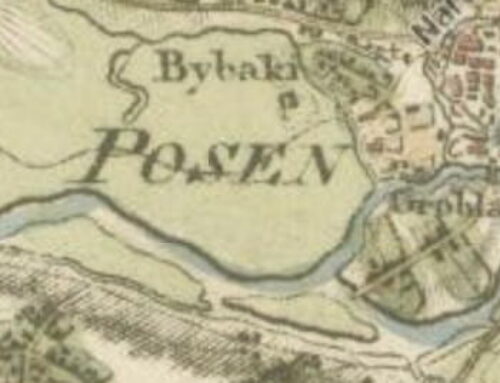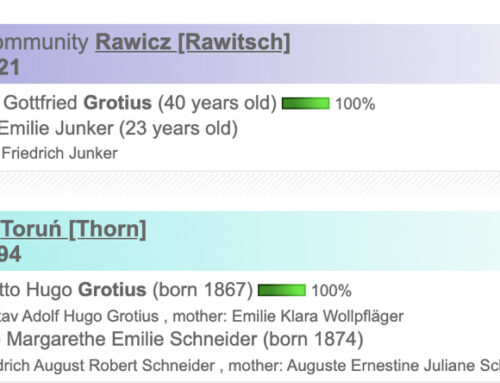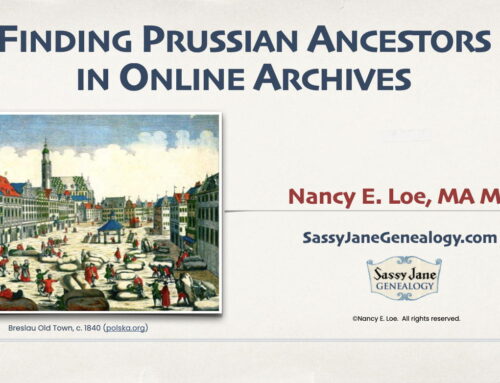I am interested in German peasant costumes for genealogy research. The best sketches I’ve found were created by noted German-American commercial artist Louis Prang. Discovering his artistry has illuminated my family history research in Germany, Prussia, and Austria.
German Peasant Costumes
My 3-great-grandmother Johanna Christiane Schott was born 25 Apr 1788. Her birthplace was Dammer, Schlesien, Prussia; today it is Namysłów, Opole, Poland. Records are fewer, so I always search for new insight into her Silesian life.
None of my German-speaking Prussian ancestors were of the nobility. So finding Prang’s peasant costume sketches was a bonus. It helps me understand a bit more about their lives and provides context in a way no pedigree chart can.

German Peasant Costumes for Spreewald, Brandenberg, Prussia, [c. 1861-1897]. Courtesy Louis Prang & Company Collection, Arts Department, Boston Public Library.
Prussian Peasants
Louis Prang‘s series of German peasant costumes chromolithographs are available at the Boston Public Library. Archivists there have digitized many plates of Prang’s work. The plates were published c. 1861-1897, based on research Prang did after returning to his native land.
German Peasant Costumes for Genealogy Research
In 1864, Prang visited Europe to study the latest techniques in German lithography. When he returned to Boston, he created he used a lithographic process he called “chromos.” The artist produced chromo Christmas cards for England in 1874 and for the US the next year. Today. he is considered the father of the American Christmas card.





Leave a Reply